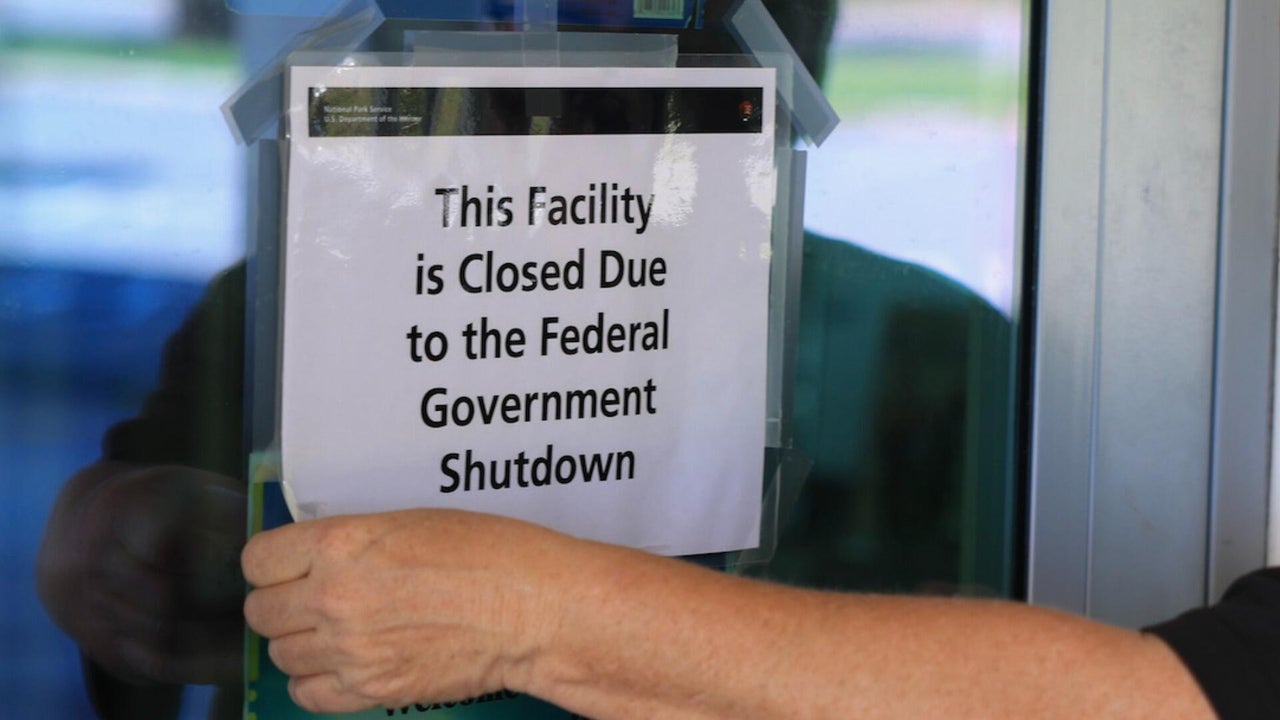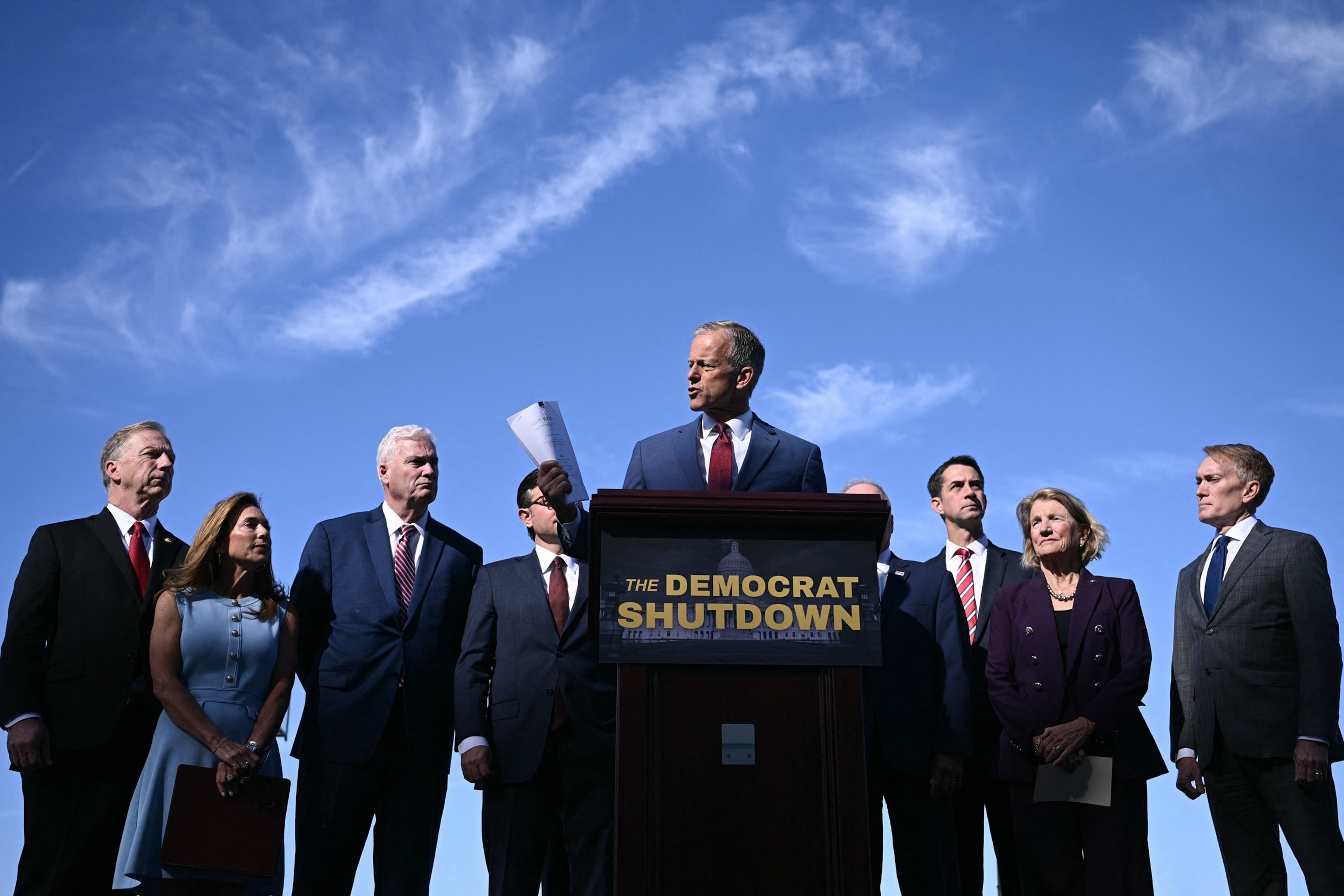Government Shutdown Day 3: Federal Crisis Deepens as Layoff Threats Loom
Government Shutdown Day 3: Federal Crisis Deepens as Layoff Threats Loom
Quick Navigation:

The United States federal government enters its third consecutive day of shutdown on Friday, October 3, 2025, as congressional leaders remain deadlocked over funding legislation. With approximately 750,000 federal workers furloughed and essential services disrupted, the crisis has deepened amid unprecedented threats of permanent layoffs from the Trump administration.
Government Shutdown Day 3: A Nation in Limbo
As dawn breaks on the third day of the federal government shutdown, Americans across the nation are experiencing the tangible effects of congressional gridlock. The shutdown, which began at 12:01 a.m. on Wednesday, October 1, has created widespread disruption across federal agencies and services that millions of citizens depend upon daily.

The scope of this shutdown extends beyond typical government closures. Major federal departments including Education, Commerce, Labor, and State have completely shuttered operations. National parks remain partially accessible, though visitor centers, parking facilities, and museums have closed their doors to the public.
Essential Services Continue Despite Crisis
While the shutdown has caused significant disruptions, certain critical services continue to operate. Social Security payments, Medicare benefits, military operations, law enforcement activities, immigration enforcement, and air traffic control remain functional as they operate under separate funding mechanisms or are deemed essential for public safety and national security.
Senate Prepares for Fourth Vote Amid Partisan Divide
The Republican-controlled Senate is scheduled to convene at 11:30 a.m. Friday, with voting set to begin at 1:30 p.m. on competing Democratic and Republican short-term spending proposals. This marks the fourth attempt to advance funding legislation, with previous votes failing to meet the required 60-vote threshold needed for passage.
The Voting Mathematics
With Republicans holding a 53-47 majority in the Senate, at least seven Democratic senators must cross party lines to reach the 60-vote supermajority required to advance any funding bill. In previous votes, only three Senate Democrats have defected to support Republican proposals, falling short of the bipartisan support needed for passage.

Senate Majority Leader John Thune (R-S.D.) has indicated that if Friday's votes fail again, the Senate will likely adjourn until Monday, potentially extending the shutdown into its sixth day. This timeline aligns with House scheduling, as both chambers would reconvene simultaneously to continue negotiations.
Unprecedented Mass Layoff Threats Escalate Crisis
The Trump administration has dramatically raised the stakes by threatening permanent layoffs of federal workers during the shutdown—a departure from historical precedent where employees were typically furloughed temporarily and returned to work once funding resumed.
White House Strategy and Timeline
Office of Management and Budget Director Russell Vought has been spearheading the administration's approach, telling House Republicans on a private conference call that federal layoffs could begin within "one to two days" if the shutdown continues. Vice President JD Vance confirmed these plans during a White House briefing, describing the layoffs as an "unfortunate necessity."
The administration has framed these potential permanent dismissals as necessary to maintain essential services, though critics question the logic of reducing the federal workforce to preserve government functions. The threatened layoffs represent plans affecting fewer than 16,000 federal employees, according to senior White House officials.
Economic Disruption and Data Blackout
The shutdown's economic ramifications extend beyond the immediate impact on federal workers. One of the most significant disruptions affects economic data collection and reporting, creating uncertainty for markets, policymakers, and economists nationwide.
Jobs Report Postponement
The Bureau of Labor Statistics' highly anticipated monthly employment report, typically released on the first Friday of each month, has been postponed indefinitely. September's jobs data, which economists use to gauge labor market health and inform Federal Reserve policy decisions, remains unavailable as the bureau's 2,000+ employees remain furloughed.

This data blackout comes at a particularly sensitive time for the U.S. economy. Job growth has shown signs of slowing in recent months, and forecasters had expected September's report to show approximately 50,000 new jobs added—a modest increase from August but still below historical averages for this time of year.
Vulnerable Programs Face Funding Shortfalls
Beyond immediate service disruptions, critical assistance programs face potential funding exhaustion. The Women, Infants, and Children (WIC) nutrition program, which serves millions of low-income families, could run out of money within one to two weeks if the shutdown persists, according to administration officials and advocacy groups.
Political Dynamics and Path Forward
The current impasse centers on competing priorities between Democratic and Republican legislators, with both sides demonstrating little willingness to compromise on their core demands.
Democratic Position on Healthcare Subsidies
Democratic senators have consistently demanded that any funding resolution address expiring subsidies for Affordable Care Act insurance plans. These enhanced subsidies, which benefit over 22 million Americans, are scheduled to expire at the end of 2025. Democrats argue that with open enrollment beginning next month, immediate action is necessary to prevent coverage disruptions and premium increases.
Recent polling data from the nonpartisan Kaiser Family Foundation indicates that 59% of Republican voters and 57% of "Make America Great Again" supporters actually favor extending these healthcare subsidies, suggesting broader public support for the Democratic position than partisan rhetoric might suggest.
Republican Strategy and Messaging
House Speaker Mike Johnson (R-La.) continues to characterize the shutdown as a Democratic-manufactured crisis, arguing that Republicans have fulfilled their obligations by passing a "clean" continuing resolution. Johnson dismissed polling showing greater public blame directed at Republicans, attributing the results to media bias rather than substantive policy disagreements.

Republican leadership insists that healthcare subsidies should be addressed in separate legislation after government funding is restored, while Democrats worry this approach represents a "bait and switch" strategy that could leave the subsidies unaddressed.
Frequently Asked Questions
What services are affected by the government shutdown?
Major departments like Education, Commerce, Labor, and State are closed. National parks are partially open but with limited services. However, Social Security, Medicare, military operations, and law enforcement continue functioning.
How many federal workers are affected?
Approximately 750,000 federal employees are currently furloughed, with additional workers continuing in essential roles without guaranteed pay during the shutdown period.
What are the chances of permanent layoffs?
The Trump administration threatens permanent layoffs affecting fewer than 16,000 workers, though legal experts question the authority and procedural validity of such actions during a shutdown.
When might the shutdown end?
If Friday's Senate votes fail, the shutdown will likely continue through the weekend until Monday, when both chambers reconvene. Resolution depends on bipartisan compromise on healthcare subsidies.
Looking Ahead: Weekend Negotiations and Monday's Crucial Votes
As the federal government enters its third day of shutdown with no immediate resolution in sight, the stakes continue to escalate for both political parties and the American public. The weekend ahead will likely feature intensive behind-the-scenes negotiations as leaders from both parties face mounting pressure to find common ground.
The economic costs of the shutdown compound daily, affecting not only the 750,000 furloughed federal workers but also the broader economy through delayed data releases, postponed government contracts, and reduced consumer spending in areas with high concentrations of federal employees.
With both parties maintaining firm positions on their core demands, the resolution may ultimately require creative compromise that addresses Democratic concerns about healthcare subsidies while providing Republicans with face-saving measures that allow them to claim victory in reopening the government.
Stay Updated on the Crisis
Keep informed about this developing story. Share this comprehensive analysis to help others understand the shutdown's impact: